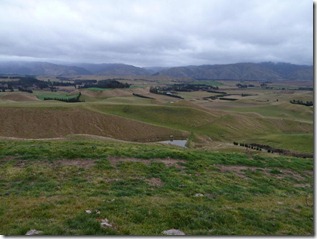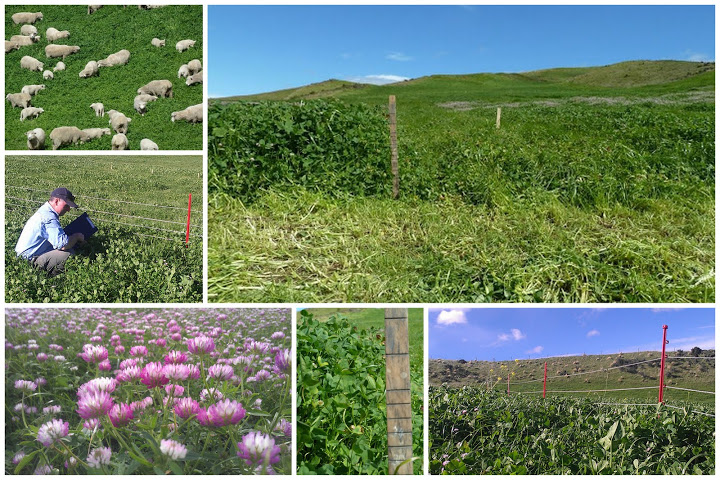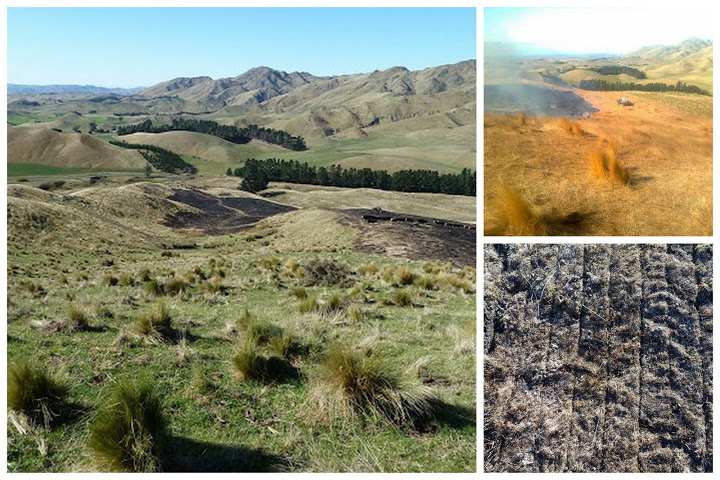Warwick and Lisa Lissaman’s farm (Breach Oak) is located just out of Seddon, Marlborough. Warwick has chosen two annual clover species: Gland and Balansa for us to focus on within our blogs. We will discuss the various management issues and techniques he uses to maximise production from his hill country using these two legumes, both of which are relatively unique to hill country farming in NZ.
Breach Oak is a true dryland farm in that it only receives around 600 mm of rainfall annually. The farm is 400ha with a mix of flats, and rolling hill country. Approximately 100 ha is able to be cultivated with a tractor. 40ha of the flat area is sown in pure lucerne, which Warwick plans to increase to 50+ha in the next few years. Warwick runs 1600 ewes with replacements (a predominately Corriedale breeding flock with Hampshire/Texel terminal sires). The beef herd consists of approximately 80 Angus, Hereford or AHX breeding cows, with all progeny sold. Additional trading cattle are purchased in Autumn/winter. Depending on the season, some or most stock are finished on farm.
 The predominant soil type at Breach Oak is a Loess Silt Loam. These soils can become very wet in winter due to imperfect drainage, but also dry out with a soil moisture deficit occurring in the months November to March in most years. The topography is undulating (photo left), with under run erosion occurring in some areas of the farm. Erosion prevention is one of the reasons why it is important to have hill faces that have a constant cover of vegetation in the form of productive and persistent pasture.
The predominant soil type at Breach Oak is a Loess Silt Loam. These soils can become very wet in winter due to imperfect drainage, but also dry out with a soil moisture deficit occurring in the months November to March in most years. The topography is undulating (photo left), with under run erosion occurring in some areas of the farm. Erosion prevention is one of the reasons why it is important to have hill faces that have a constant cover of vegetation in the form of productive and persistent pasture.
A huge amount of effort has gone into improving pasture production, quality and persistence at Breach Oak, and this is one of the reasons that Warwick has endeavoured to introduce some of these novel annual clovers to his system. The current stocking rate is 4-5 SU/ha on Warwick’s hill country areas, but his aim is to increase this to 6-8 SU/ha by renovating hill country pastures and ultimately increase legume content within the pasture sward.
Warwick has identified the following paddock for us to focus on within our blogs:
50A Paddock
The previous paddock development consisted of aerial seeding of sub and white clover with super-phosphate topdressing. This was several decades ago and the paddock had stabilised as a semi improved tussock grassland with a small amount of sub clover present in the resident pasture sward. The paddock was deemed to be underperforming, and was not providing high quality pasture when needed during lambing. This paddock is able to be limed by ground spreader, and direct drilled using a 4WD tractor. Warwick identified this area as a paddock where he could trial several of the annual dryland clovers, gauging which is best suited to renovate tussock land pastures, and deliver high quality feed to his stock when required.
The paddock is also being used to trial various herbicides on the novel annual clovers to determine tolerance, timing and application rates to prevent weed infestation of developed hill country using “clover friendly” chemicals. The term clover friendly is the unknown as the species that are being trialled: Arrowleaf, Balansa, Persian, Gland (and to some extent Sub Clover) are relatively unknown as to their tolerance of commonly used thistle and broadleaf weed chemical controls.
Our focus for this blog will be on the paddock renovation areas that were sown. Once we have firm data from the herbicide tolerance trial, we will start to include this within our blog.
The results achieved from the pasture renovation are phenomenal, with a complete shift in the pasture quality on offer to what was there previously. The timing of this high quality feed is also spot-on to support lactating ewes and lambs, and young beef stock. Please see photos below of the before and now, so you can see what is achievable.
We will cover the progress of this paddock development in future blogs, starting from the paddock development and sowing back in autumn, through to spring (now), and Warwick’s management of this pasture going into summer and autumn.
Please send us any comments or requests for further information regarding these annual legumes, we are only too happy to help. Please use the comment section below each blog to send us your requests. You can also subscribe to this blog series and receive notifications of further blog entries by following the instructions posted here:

